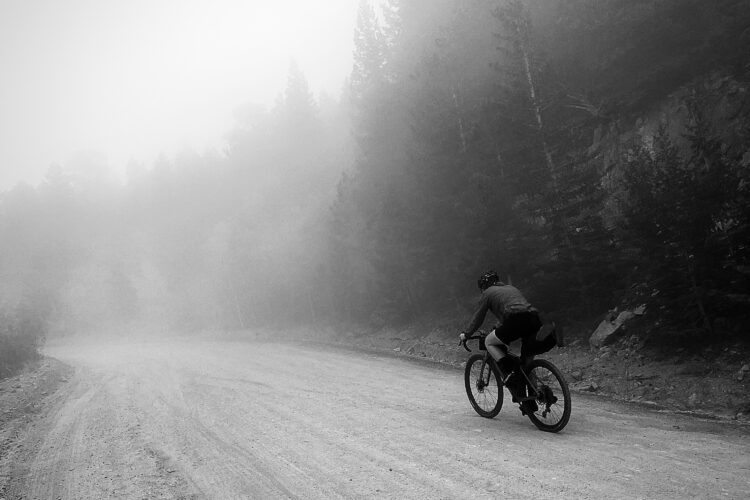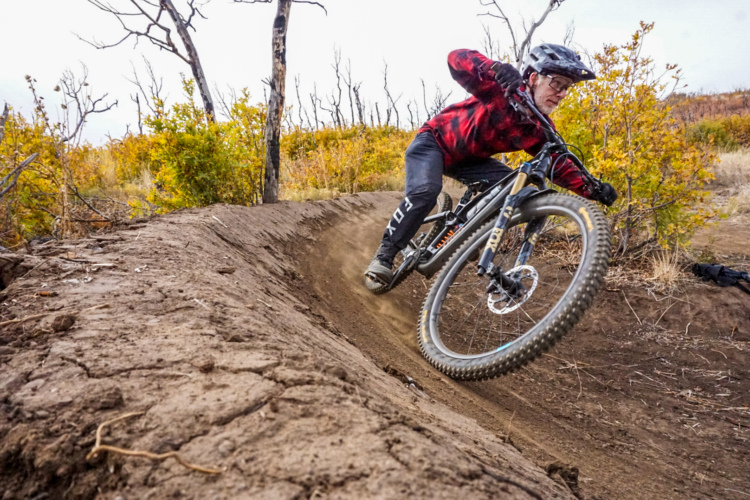
If there’s one thing we can all agree on, it’s that nothing improves your riding like more time in the saddle. Whether you’re working on building up your motor for your favorite weekly group ride or you’re honing technical skills for the local endurbro series, more time on the bike means you’ll be a better rider, hands down (along with a host of other health benefits).
As a new year approaches, it’s fairly common for riders to set mileage goals for the coming year. For some people, it’s strictly personal, while others are decidedly more vocal about it. Either way, I’d guess there’s a pretty big disparity between the number of people who set goals and the number who actually achieve them.
That’s not the end of the world, and the reality for most of us is that life often gets in the way of mountain biking. Still, I’d argue that a few small changes can make all the difference between watching our mileage goals sail right by and shattering them by the time the leaves are falling off the trees.
1. Make a Plan
Goals are just imagining the end result of hard work before you’ve actually done the work. A goal by itself is nothing more than a hopeful fantasy. They can even be a cop out, so when people fall short they can say, “Well, at least I tried by setting that goal.”
What makes all the difference is a plan. If you know you can only get out to ride once a week and your goal is to ride 500 miles, you know you need to be riding at least 9.61538 miles for 52 weeks out of the year. A plan also allows you to account for the unknown, so you can ride an extra mile each week to make up for that one weekend where you have to go to work and fill out TPS reports on a Saturday.
2. Have an Accountabili-buddy
It could be your regular riding partner, your dog, or someone you’ve been stalking on Strava whose annual mileage is consistently the same as your goal. I find a friend works the best, especially when it starts getting colder or you have to get up before the sun rises to sneak in a ride before work.
Having an ongoing pact helps keep all parties committed. My buddy and I started the lunch bet, and it’s been a game-changer. Whoever shows up after the designated meeting time (even by a minute) owes the other one lunch. If you’re both late, whoever gets there latest has to pay up.
Even though I’ve gotten more than a few lunches out of this (shout out to Ryan’s snooze button!) the actual point is to keep everyone punctual so it’s easier to squeeze in a ride in a small window of time. You’re also way less likely to send that regrettable 6am text telling your friend not to bother waiting, when you know you’ll automatically have to pony up a $10 burrito.
3. Extend your Season
Whether you’re trying to ride 200 miles or 2,789.9 (NY to LA), it’s easier to do it in 12 months than 9. If your climate allows, get some lights or winter riding gear to extend your season as long as possible. It doesn’t have to cost a fortune, either. “Winter riding gear” doesn’t have to be cycling-specific, just layer up. Lights can also be had for dirt cheap these days — here are some recommendations.
[see_also id=’38259′]
4. Mix it Up
Especially if you have an ambitious mileage goal (with a plan to reach it), it’s important to mix up your riding to avoid burnout. Night riding can be a great way to do this, but if riding in the daylight is more your thing, there are still plenty of ways to keep it fresh. Ride your regular loop in the opposite direction, or better yet: hit the road to discover some new spots.
[see_also id=’221909′]
If you’re exhausted from logging high mileage cross country days, find a place to do some shuttled laps, or maybe jib around at the bike park and get humbled by some 10-year-olds. However you go about it, keep it fun.
5. Take Time Off
Wait, what? Not riding can indeed help you reach your lofty mileage goal. Overtraining not only leads to mental burnout, but it causes physical injuries, and if you have to take two weeks off four separate times throughout the year, you’ve just lost two months R.I.C.E.ing on the couch watching Rampage reruns.
If you’re addicted to exercise, don’t panic. Cross training is an excellent way to give your riding muscles a break and improve your overall fitness. Here are some ideas for keeping your heart rate up on rest days.
[see_also id=’213533′]
The great part about planning to accomplish your mileage goal is that it keeps you consistent. Whether you can hit the trails twice a week regularly or you ride your bike to work every day, consistency builds skills and fitness like nobody’s business. If you have a goal in mind, hopefully these tips will help you achieve it. If you weren’t planning on setting one, I hope you’ll consider it as a fun way to keep progressing throughout the year.
Do you have an annual mileage goal? Or do plans and goals ruin the magic for you? Let us know in the comments below.











7 Comments
Dec 12, 2017
Dec 12, 2017
Dec 12, 2017
I'm really disappointed not to make it, especially after being so close, but I'm trying to stay positive about the whole thing. Pushing too hard now would mean even more time off the bike in the future. Instead, I'll add those missing miles to my goal for 2018.
Dec 12, 2017
Dec 12, 2017
Dec 12, 2017
Dec 12, 2017